-
December 4, 2018 by Total Fire and Safety

A brand new year is a great time for businesses to evaluate what they can improve upon, even in terms of their commercial fire safety. No business is completely immune to accidental fires and having the right equipment in place year round can prevent potential devastation.
According to the National Fire Protection Association (NFPA), more than 3,300 fires break out in office buildings across the U.S each year. The NFPA reports that a number of people are killed or injured with an estimated $112 million in property damage.
If you’re a business set on achieving your 2019 goal of reaching NFPA compliance, take a look at checklist of equipment you need below for commercial fire safety. Anything missing? Call Total Fire & Safety. We can help!
____ Alarms
____ Extinguishers and Suppression Systems
- Conduct tests regularly to ensure function and pressure when activated.
- Schedule routine maintenance of equipment.
- Store extinguishers in open areas for easy access.
____ Emergency Lighting
- Effective emergency lighting throughout the building will help occupants to safety in an emergency.
- Schedule regular maintenance and inspections.
Equipment is essential and necessary to prevent major damage but people are too! Whether it’s putting out a fire or tending to the injured, what good is the equipment if you don’t have employees able to use it?
____ First Aid
____ Training Courses
- A comprehensive fire equipment training course on the use of fire equipment and first aid can place confidence in employees and keep everyone safe.
- Training employees reduces the chance of small fires starting and spreading.
You could have all the equipment ready and employees trained to use it but they need something else.
____ Emergency Preparedness Plan
- Remind employees to REACT-(remove from danger, ensure doors/windows are closed, activate alarm, call 911, treat as dangerous.)
- Conduct fire drills.
- Schedule inspections of all fire equipment.
- Have employees trained on firefighting equipment.
Making sure you have commercial fire safety in place can seem a daunting task but the pros at Total Fire and Safety are here to simplify it. TFS covers everything including inspection, maintenance, training, and keeping your building up to code so you are well protected in the event of an unforeseen fire. Give us a call today at 630-960-5060.
Category: Business Safety, Fire Alarm Monitoring, Fire Equipment Inspections, Fire exits, Fire Extinguishers Tags: commercial fire protection, commercial fire safety, commercial first aid kit, emergency exit lights, emergency lighting, fire and safety solutions, Fire Extinguisher, fire safety, fire safety training, fireextinguisher, firesafetytraining, firesprinklerinspections, first aid | Comments Off on The Business Owner’s Checklist for Commercial Fire Safety in 2019
-
November 5, 2018 by Total Fire and Safety

Next to the everyday hustle and bustle of the average office, office kitchen fire safety is a secondary concern. However, the National Fire Protection Agency (NFPA) reports that just over one-fifth of office fires begin in the kitchen or cooking area. Twenty-nine percent are started by cooking equipment, the leading cause of fires in the office. Although these fires started small, they caused major structure damage.
With the holidays on the way and more employee parties sure to take place, the office kitchen will be used more than ever. How can you prevent a fire from happening? How do you keep your employees safe and well fed at the same time? Here are four important safety tips to help you get started:
1. Replace worn or frayed power cords.
Inspect power cords on the kitchen appliances. Are the wires exposed? If so, the cord can short out and cause a fire. Encourage your employees to keep an eye out for damaged cords. Be sure to replace them as soon as they are found. This one simple act will keep the office safe.
2. Watch food as it cooks.
It easy to become distracted in the office, whether its fellow coworkers gossiping or doing too many things at once. You wouldn’t leave food unattended at home and the office should not be any different. To ensure food cooks properly, emphasize that employees must stay near appliances as they cook or heat food/beverage. Employees using the kitchen also need to watch for signs of smoke or burning. Doing so will ensure the safety of the entire building.
3. Regularly clean appliances.
We’ve all been there. We stick a (insert food item) in the microwave, oven, toaster, etc., and it explodes or leaves spillage behind. However, we avoid cleaning, commonly thinking someone else will do it. Spills and baked-in foods left behind can cause a fire. Cleaning kitchen equipment after use will prevent grease from accumulating which prevents combustion. These hazards can be avoided easily so remind employees to wipe up spills, food particles left behind, etc.
4. Have employees trained to use a fire extinguisher.
No matter how proactive you and your employees are, accidents still happen. Having staff trained to use fire fighting equipment could mean the difference between a catastrophe or a minor incident. Total Fire and Safety can train you and your employees to use a fire extinguisher, first aid equipment, and other lifesaving safety measures.
With most office fires starting in the kitchen, it is important to educate employees on office kitchen fire safety. Total Fire and Safety (TFS) offers a complete fire training program to educate employees on the proper techniques of fighting a fire. Not only can your employees use these practices in the office, they can also apply them in their home. Keep you, your staff, and your workplace fire safe. Give TFS a call today at 630-960-5060.
Category: Business Safety, Fire Extinguishers, Fire Safety, First Aid, First Aid Kits Tags: commercial fire safety, fire and safety equipment, fire and safety needs, fire and safety solutions, Fire Extinguisher, fire safety, fire safety solution, fireextinguisher, firesafetytraining, first aid | Comments Off on Danger on the Job: Keeping the Office Kitchen Safe
-
March 21, 2018 by admin
Join us for the 2018 Fire Safety Symposium
at Total Fire & Safety!
Register below! Space is limited!
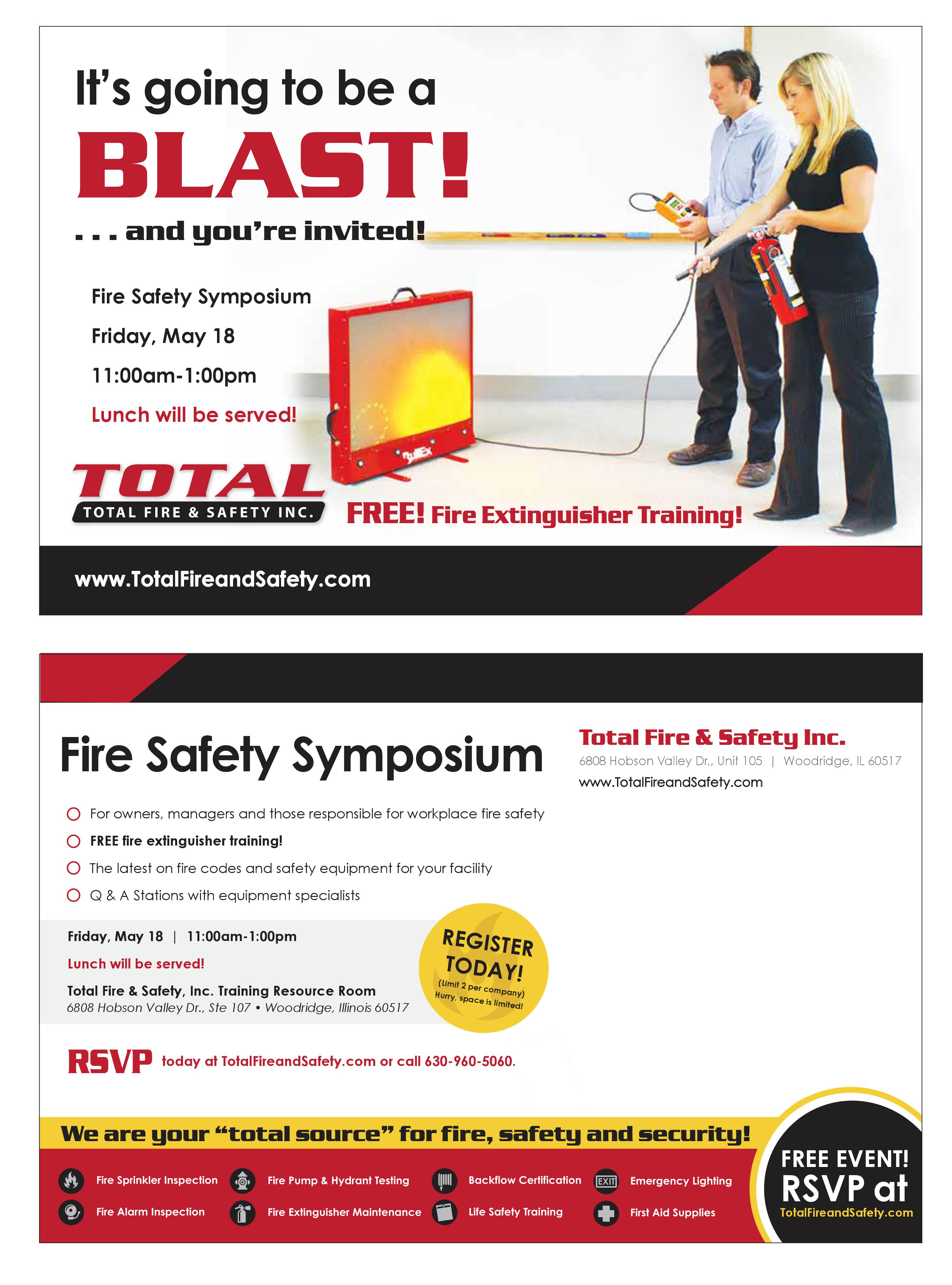
Category: Business Safety, Client Events, Fire Extinguishers, Fire Extinguishers, Fire News, Fire Safety Tags: commercial fire safety, employee training, fire and safety equipment, fire and safety solutions, Fire Extinguisher, fire safety, fireextinguisher, Fireextinguishertraining, Total Fire & Safety, Total Fire and Safety, training | Comments Off on Fire Safety Symposium
-
March 15, 2018 by Total Fire and Safety
 Nobody thinks much about emergency exit lights. But if the power suddenly goes out, smoke fills the room and you can’t see a foot in front of you, relying on the emergency lights may be your only means of escape. Nobody thinks much about emergency exit lights. But if the power suddenly goes out, smoke fills the room and you can’t see a foot in front of you, relying on the emergency lights may be your only means of escape.
Emergency exit lights are essential to safety in any dangerous situation. They can alarm someone in a fire, be the only source of light in the dark, and the key to safely exiting the building. Emergency exit lights are often overlooked and taken for granted, but take note of how many you come across every day. Do you realize how many requirements and regulations go into the installation and maintenance of one exit sign?
There are numerous agencies that govern emergency exit lighting and signs: OSHA (Occupational Safety and Health Administration), NFPA (National Fire Protection Administration, JCAHO (Joint Commission on Accreditation of Healthcare Organizations and the International Building Code and International Fire Code. Above all these agencies, the local authority is responsible for monitoring and enforcing building/fire codes.
According to OSHA, an exit route is defined as a continuous and unobstructed path of exit travel from any point within a workplace to a place of safety. There are three parts to an exit route:
- Exit access-part of the exit route that leads to an exit.
- Exit-part of the exit route that is separated from other areas and provides a safe means of travel to exit discharge.
- Exit discharge-part of the exit route that leads to directly outside or refuge area.
OSHA’s requirements for the lighting of these afore mentioned exit routes is covered under 1910.37(b). It states that each exit route must be sufficiently lighted so an employee with normal vision can see along the exit route and each exit must be clearly visible and marked by a sign reading “EXIT.” Additional information for OSHA requirements can be found at www.osha.gov.
The NFPA guidance for emergency exit lighting and signs can be found in the NFPA 101, Life Safety Code. The NFPA’s Life Safety Code provides information for placement, illumination, and visibility for exit signs.
- Placement of exit sign. Any exit signs must be located so that no point in an exit access area is more than the sign’s viewing distance, or 100 feet from the nearest sign.
- Visibility of exit signs-Every sign must be located and of such size, distinctive color and design that is visible and contrasts from the background of its placement. NFPA also states no decorations, furnishings, or equipment that impairs visibility of a sign shall be permitted. Nothing should be placed near an exit sign that distracts attention and inhibits visibility of an exit sign.
- Illumination of Exit Signs-The NFPA states all exit signs must be illuminated by a reliable light source and legible in normal and emergency exit lighting modes. There are two categories of illumination: external illumination, which comes from outside the exit sign and internal illumination, which comes from a source inside an exit sign.
According to the NFPA, emergency illumination must be provided for a minimum of 1.5 hours in the event of power outage. The emergency lighting must be illuminated not less than an average of one lumen per square foot. The maximum illumination at any point can be 40 times the minimum illumination. All emergency exit lighting must be able to provide lighting automatically when normal light is interrupted.
Many emergency exit lights are now using LED lights. The NFPA states that LED lights are longer lasting, provide better light and are most durable. In emergency situations, LED lights emit sufficient lighting and are most effective when placed properly. They are also most energy efficient, saving the building money.
According to the NFPA requirements for testing, there are three categories of emergency lights: traditional, self-testing, and computer base self-testing. A monthly activation test which involves having the lights illuminate for no less than 30 seconds and an annual test which keeps the lights illuminated for 1.5 hours, simulating a long-term emergency. Records of these test must be maintained for inspection.
Many regulations, codes, and considerations go into the signs and lights you see every day so it is important to have regular maintenance and testing of these lights. Total Fire and Safety has a knowledge team for inspecting emergency exit lighting. With regular maintenance and testing from Total Fire and Safety, you can be assured your emergency exit lighting is up to code and the safety of your employees/tenants is assured. Give us a call today 630-960-5060.
Category: Business Safety, Fire code violation, Fire Equipment Inspections, Fire exits, Fire News, Fire Safety, Health and Safety, LED Lighting, NFPA Compliance, Total Experience, Total Fire and Safety Tags: commercial fire protection, commercial fire safety, emergency exit lights, emergency lighting, fire and safety equipment, fire and safety needs, fire and safety solutions, fire safety in the news, fire safety solution, fire safety training, lifesafety, safety | Comments Off on Are You In the Dark About Emergency Exit Lights?
-
February 13, 2018 by Total Fire and Safety

When a ballistic missile warning sounded in Hawaii recently, few people had an emergency preparedness plan in place. Instead, people were sent into panic. Parents threw their children into sewers, people caught in traffic ran from their cars, some Googled “how to shelter from a nuclear bomb.” We can look at this now in hindsight and think we would have handled it differently. But would we? Whether it’s a ballistic missile, tornado, or a fire it is important to have an emergency preparedness plan.
When a fire occurs in the office, people are likely to react the same way. However, if employees understand what’s going on, what to do, where to go and how to get there, panic will not set in. A fire emergency preparedness plan will help employees feel in control during an emergency and do what needs to be done. .
One way to help employees respond appropriately in an emergency is to remember to REACT:
- R-Remove persons from danger. Know the location of fire exits and that they are not blocked. Steer clear of elevators and equip them with warning signs: in case of fire do not use. They can trap people and must be available to firefighters. Figure out a designated meeting area for employees, safe from danger. Make a procedure in case of entrapment in the building. Assign someone to always keep a list of employees and visitors, so you can begin a roll call once in the safety area.
- E-Ensure doors and windows are closed. Keep doors and windows closed to prevent spreading of the fire.
- A-Activate building alarm. Make sure alarms or a warning signal are working properly and that your employees are familiar with the sound. Most importantly, have regular fire drills.
- C-Call the fire department. Never investigate the fire on your own. Time is minimal for your employees to reach safety quickly.
- T-Treat all fires as dangerous.
A fire preparedness plan also includes having the right equipment and in working order too. Does your place of business have everything it needs to survive a fire? And has it been inspected lately? Know that your facility is up-to-date on the systems it needs to have ready to go in case of a fire:
Don’t forget that the second part of having the right fire equipment is having employees that can operate the equipment safely. Total Fire and Safety offers training courses for employees on all our technologies and equipment. Having employees properly trained improves chances of putting out small fires.
As you can see there are many safety precautions to include in a fire preparedness plan. If your building does not have the proper safety equipment or it is not up to date, there could be catastrophic consequences. Total Fire and Safety always has the well-being of the customer in mind as we complete our inspections. We never give less than 100 precent because you can never be too prepared for a fire. Contact us at: 630.960.5060
Category: Business Safety, Fire code violation, Fire Equipment Inspections, Fire exits, Fire Extinguishers, Fire Extinguishers, Fire Safety, Sprinkler Systems Tags: commercial fire protection, commercial fire safety, commercialfiresprinkler, emergency exit lights, emergency plan, emergency preparedness, employee training, Extinguishertraining, fire safety in the news | Comments Off on Fire in the Office! Do You Have a Fire Emergency Preparedness Plan?
-
January 15, 2018 by Total Fire and Safety
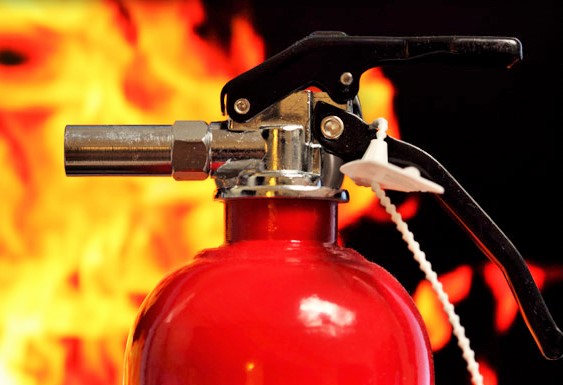
There’s no better way to ring in the new year and make sure your business is ready for any emergency 2018 brings than with proper fire extinguisher service at all of your locations. The National Fire Protection Association (NFPA) states that all portable fire extinguishers be inspected on a monthly basis and maintained by a licensed fire protection company on an annual basis. Yet each year nearly 25,000 fires cost companies over billions of dollars from not only recovery of property and premises but worker’s compensation filings and lawsuits from employees. Sometimes damages could have been reduced if employees had been aware of and actually used the fire extinguishers available.
Properly working fire extinguishers are a first line of defense against fires and can significantly minimize damage until help can arrive. Total Fire and Safety provides a thorough inspection that begins when we walk in the door, and continues throughout the building. Our fire extinguisher service contains our twelve-point check. What are the 12 points?
- Visual examination: We ensure the device is free of dents, rust, corrosion, and other related hazards.
- Test/Maintenance history: We review the test/maintenance history to ensure the internal system is active.
- Pressure Gauge: We check the pressure gauge to confirm the compression in the tank.
- Weight: We make sure the right amount of fluid is inside the tank.
- Discharge hose: We remove it and inspect for irregularities.
- Locking pin: We check for ease of removal in the event of a disaster.
- Handle/Lever: We ensure that the handle/pin will discharge smoothly.
- Clean Extinguisher: We degrease any pertinent areas.
- Inspection certification: We attach a safety flag and service tag to signify when service was completed.
- Extinguisher: We return it to the designated location.
- Mounting Bracket: We secure the extinguisher on its mount correctly.
- Hazard Application: We confirm you have the proper extinguisher type installed for your application.
Hand in hand with having extinguishers is teaching your employees how to use them. That’s why Total Fire & Safety also offers training courses for your employees/tenants so that in the case of an actual emergency, they will not hesitate to reach for the fire extinguisher.
Fire extinguishers are not only legally required but also give employees piece of mind, especially if they know how to use them. Employees appreciate working for a company that has their safety in mind. However, fire extinguisher service is definitely key.
If your fire extinguishers need service or are due for an inspection, please don’t hesitate to contact us at contact us at 630.960.5060.
Category: Fire Equipment Inspections, Fire Extinguishers, Fire Extinguishers, Fire Safety Tags: commercial fire safety, Extinguisher, fire and safety equipment, fire equipment inspection, Fire Extinguisher, fire extinguisher inspection, fire safety, fireextinguisher, Fireextinguishertraining | Comments Off on Is it time for Fire Extinguisher Service?
-
November 29, 2017 by Total Fire and Safety
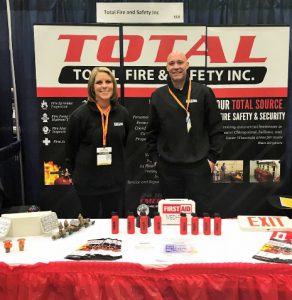 Robin Jones, business development (left) and Jason LeGrand (outside sales) at the latest Co-op and Condo Expo at Navy Pier in Chicago. Did you stop by and see us at the latest Co-op and Condo Expo at Navy Pier in Chicago?
Our team was on hand to talk to condo owners, homeowner association board members, property managers and apartment building owners about their fire safety. We participate every year, not only to meet new prospective clients, but to see our many satisfied ones that come for the educational seminars and exhibit floors.
Visitors to our booth walk away with one of our fire extinguisher-shaped stress balls (if you don’t have one, ask your Total Fire & Safety technician!) and a better understanding of their fire safety responsibilities as property owners or managers. What were the most frequently asked questions?
- How do I know if I am in compliance? (We can help perform inspections to make sure buildings are up-to-date with NFPA requirements, which vary depending on your structure and occupancy.)
- What is this wireless fire alarm technology and will it save me money? (Besides making sure your fire alarms are inspected, in compliance and operational, we can update your old equipment to reduce maintenance costs and improve performance.)
- What do my tenants need to know about fire safety? (We offer solutions and fire safety training on a customized basis.)
- Do you offer first aid kits? (We offer a variety of commercial first aid kits based on your environment’s needs. A first aid kit can make a big difference in the comfort and safety of your tenants or employees!)
- Why Total Fire & Safety? (We are one of the most experienced commercial fire protection companies on the market and make use of some of the most technologically advanced reporting features available.)
We hope to see you at the show next year! Until then, if we can be of assistance with your fire safety needs, don’t hesitate to contact us at 630.960.5060.
Category: Business Safety, Client Events, Fire Safety, NFPA Compliance, Total Fire and Safety, Uncategorized Tags: client events, commercial fire protection, commercial fire safety, Events, fire and safety needs, Total Fire & Safety, wireless fire alarms | Comments Off on TFS at the Co-op and Condo Expo
-
October 31, 2017 by Total Fire and Safety
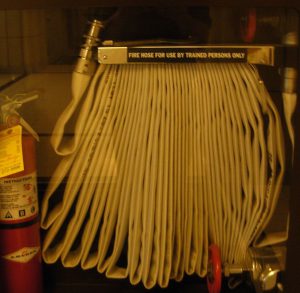 All fire safety equipment is subject to rigorous standards for safety and reliability, and fire hoses—the subject of NFPA 1962—are no exception. Despite looking like a relatively simple device, a fire hose is one of the most important lines of defense in firefighting. NFPA 1962 is an important revised standard for fire hoses; an outline which ensures that all hoses and their components will perform safely and as expected. At Total Fire and Safety, we take pride in ensuring that every fire hose meets all safety specifications. All fire safety equipment is subject to rigorous standards for safety and reliability, and fire hoses—the subject of NFPA 1962—are no exception. Despite looking like a relatively simple device, a fire hose is one of the most important lines of defense in firefighting. NFPA 1962 is an important revised standard for fire hoses; an outline which ensures that all hoses and their components will perform safely and as expected. At Total Fire and Safety, we take pride in ensuring that every fire hose meets all safety specifications.
NFPA 1962 Fire Hose Pre-Inspection
Before the inspection begins, we ensure the hose is easily accessible in all directions, and that there is a clear path to it. If the time comes to use a hose, there will be no time to clear obstructions. After this, we remove the cover from the hose and inspect the nozzle first, ensuring it opens and closes freely.
NFPA 1962 Inspection
First, we unravel the hose by the nozzle and find the tags and markings which indicate such information as the hose’s manufacture date and when it was last inspected. Once the hose is unraveled, we perform a visual inspection of the hose, inside and out, looking for any signs of wear or damage. This can be anything from cuts, to frays, to dry rotting, to contamination by a foreign substance. According to NFPA 1962, if there is any issue with the hose, we ensure it is either hydro tested or replaced. We also check the hose to ensure it is completely dry, inside and out. If we find evidence of water, we perform a hydro test to verify the hose is still up to code.
NFPA 1962 Post-Inspection
Once the inspection is complete, we carefully re-rack it to ensure it does not crack, fray, or wear prematurely over time. We also reconnect the hose to the standpipe and close the nozzle. We conclude the inspection by replacing the cover around the hose and documenting our procedure by placing an inspection tag around the standpipe.
At Total Fire and Safety, our inspectors are fully trained and up-to-date in all safety regulations—including NFPA 1962—to ensure your facility is safe and up to code. If you have any questions about your own facility’s fire preparedness, or if you are due for an inspection, don’t hesitate to contact us.
Category: Fire Hoses, Fire Safety, NFPA Compliance, Total Fire and Safety Tags: commercial fire safety, fire and safety equipment, Fire Hose Inspection, Fire Hoses, fire safety, NFPA, NFPA 1962, Total Fire & Safety | Comments Off on Are your Fire Hoses Compliant with NFPA?
-
September 4, 2017 by Total Fire and Safety
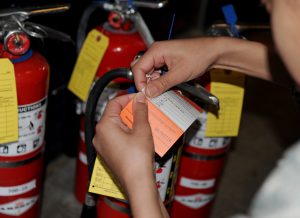 Walk into any building and you’re sure to see a fire extinguisher hanging somewhere on a wall, and although it doesn’t look it, that extinguisher requires maintenance. It does more than just sit idly until a dire situation calls for its immediate use. Most people overlook these crucial pieces of safety equipment—often to the point of not even knowing anything about it. Think about the fire extinguisher in your home or office—do you know if it is fully charged? Do you know if you will be able to depend on it to successfully extinguish a flame if the need arises? Walk into any building and you’re sure to see a fire extinguisher hanging somewhere on a wall, and although it doesn’t look it, that extinguisher requires maintenance. It does more than just sit idly until a dire situation calls for its immediate use. Most people overlook these crucial pieces of safety equipment—often to the point of not even knowing anything about it. Think about the fire extinguisher in your home or office—do you know if it is fully charged? Do you know if you will be able to depend on it to successfully extinguish a flame if the need arises?
This is why the National Fire Protection Association (NFPA) requires that that all portable fire extinguishers be inspected on a monthly basis (NFPA 10, Section 6.2.1) and maintained by a licensed fire protection company on an annual basis. (NFPA 10, Section 6.3.1)
We take fire extinguisher maintenance seriously at Total Fire and Safety, and perform rigorous inspections of fire safety equipment, including our 12-point portable fire extinguisher service check. People often ask us what goes into inspecting a fire extinguisher, so we’ve decided to share our technicians’ exhaustive process:
An inspection begins the moment we walk inside the door. At this point we already have all our tools and materials in hand to perform a proper inspection of the facility. To begin our process of fire extinguisher maintenance, we walk throughout the facility, ensuring all fire extinguishers are properly located and easily accessible. If there is not a clear path to an extinguisher, we may ask the customer to move any obstructions (We are not able to move any obstructions ourselves due to liability reasons).
We check that the extinguisher is charged and ensure it is the correct type for your facility’s hazards. For example, a kitchen requires a different type of extinguisher (or even a fire suppression system) than a server room. We verify that it will work for the type of fire which may occur in that area. In addition, we check the gauge and carefully weigh the extinguisher to ensure its pressure is in the proper range.
We perform a visual inspection and check such data as manufacture date and past fire extinguisher maintenance. We look for any signs of damage or any other reasons the extinguisher may need to be removed from service. We also check to see if maintenance is due. In some cases, extinguishers that have been dented have been tested and returned to service. We look for any markings to confirm this. One key aspect of proper fire extinguisher maintenance is communication between inspectors. All relevant information about the fire extinguisher’s maintenance history should be legible, so that any future inspectors know what we know.
We inspect and test the extinguisher’s hardware, such as the hose, pin, handle, and lever. We remove the hose from the extinguisher and ensure it is not clogged or damaged. If so, we attempt to remove the clog. If we cannot fully clear the hose or if it is damaged, we replace the hose entirely. We also ensure the pin, handle, and lever are not bent or damaged in any other way.
Finally, we check the bracket, clean the extinguisher, and place a new inspection tag on it. . Before hanging the extinguisher back up, we ensure the mounting bracket is the correct type for the extinguisher, and that it’s not damaged or incorrectly installed. We then wipe off any dirt, grime, etc., and make sure the gauge is legible. Our last step is to return the extinguisher to the bracket and apply a new inspection tag with the date we performed the inspection and the extinguisher type punched into it.
While fire extinguisher maintenance is a rather straightforward procedure, it is crucial that it is performed diligently and properly, as all these devices may be counted on to save lives at a moment’s notice. We strongly recommend that everyone’s fire extinguishers be inspected on a routine basis by qualified professionals. If you have any questions about the condition of your fire safety equipment, or if your facility is due for an inspection, please contact us at 630.960.5060.
Category: Fire Extinguishers, Fire Extinguishers, Fire Safety, Total Fire and Safety Tags: commercial fire safety, fire and safety equipment, fire and safety solutions, Fire Extinguisher, Total Fire & Safety | Comments Off on What is Fire Extinguisher Maintenance?
-
December 21, 2015 by Total Fire and Safety
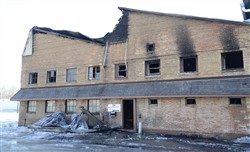 Photo from Daily Herald Business Ledger/Laura Stoecker/lstoecker@dailyherald.com Business owners everywhere know they have to keep their fire protection systems up to code, but what happens when they don’t?
In March 2014, a fire broke out in a foundry building located in Batavia, IL, caused by a careless employee. The fire happened when no one was working in the building, so no employees were hurt. However, the fire caused considerable damage to the foundry as well as the next-door business, Dewell & Dewell, which shares a wall with the foundry. Later, an investigation revealed that the reason the fire caused nearly $500K in damages was that the former tenant, Master Cast Inc., did not maintain a proper fire alarm and fire suppression system.
Now, Master Cast Inc. is being taken to court in a suit alleging the company did not have proper fire alarms and commercial sprinkler systems. The building owner is seeking $450K in damages from Master Cast Inc., and Dewell & Dewell is seeking more than $50K. The lawsuit will come to court this February.
This event is only one of the many cases every year in which a lack of properly installed fire safety equipment leads to extensive damage from fires. If your business isn’t up-to-code on all of your sprinklers, suppression systems and alarms, your business could face disastrous consequences.
This fire also addresses an issue that businesses don’t always prepare for– employee fire safety training. According to the Kane County lawsuit, the fire started when an employee used a grinder near cardboard boxes. An employee who has been trained well would have avoided the fire hazard, and possibly even fight the fire, using an extinguisher the right way.
The best way to avoid situations like this is to ensure that you have regularly scheduled fire equipment inspections. A professional service like Total Fire & Safety can keep your place of business up-to-code and inspected on a regular basis. For information on the many services available to prevent this kind of situation for your business, contact Total Fire & Safety.
Read the latest in the court investigation here:
http://dhbusinessledger.com/Content/Suburban-Trends-and-Issues/Suburban-Trends-and-Issues/Article/Lawsuit-Batavia-foundry-had-no-sprinklers-fire-caused-by-negligent-worker/87/172/17397
Category: Fire Alarm Monitoring, Fire News, Fire Safety, Sprinkler Systems, Suppression system Tags: commercial fire protection, commercial fire safety, fire and safety solutions, fire safety in the news, firesprinklerinspections | Comments Off on Foundry Fire Demonstrates Importance of Proper Commercial Fire Protection
|

|
|
|
|
|
|

 Facebook
Facebook
 Instagram
Instagram
 LinkedIn
LinkedIn


 Nobody thinks much about
Nobody thinks much about 


 All fire safety equipment is subject to rigorous standards for safety and reliability, and fire hoses—the subject of NFPA 1962—are no exception. Despite looking like a relatively simple device, a fire hose is one of the most important lines of defense in firefighting. NFPA 1962 is an important revised
All fire safety equipment is subject to rigorous standards for safety and reliability, and fire hoses—the subject of NFPA 1962—are no exception. Despite looking like a relatively simple device, a fire hose is one of the most important lines of defense in firefighting. NFPA 1962 is an important revised 

